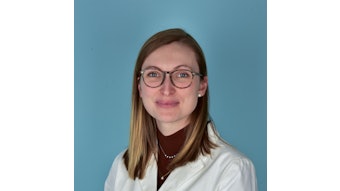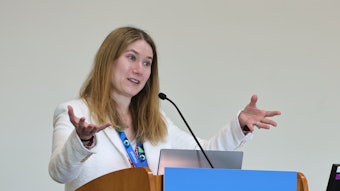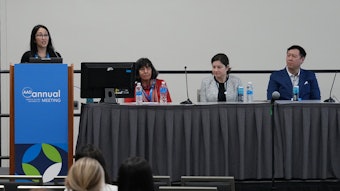A welcome relief
Effective therapies now available for hidradenitis suppurativa.

The biology of hidradenitis suppurativa (HS), also known as acne inversa, is not always understood, which has limited the development of effective therapies for this chronic inflammatory skin condition predominant among women and minoritized patient groups — until now. Recent treatment advancements include novel therapeutics and office-based surgical and laser therapies.
Saturday’s session, S033 – Hidradenitis Suppurativa/Acne Inversa (HS/AI): Current Medical and Surgical Management, brought renewed attention to the condition and hope for patients, said session director Haley Naik, MD, FAAD, associate professor of dermatology at the University of California, San Francisco (UCSF) School of Medicine.
“With recent advances in the field, there are now several novel and effective therapies that are either FDA-approved, in the pipeline to approval, or otherwise available to care for this underserved patient population,” said Dr. Naik.
Serious and complex
HS can present as deep-seated nodules and abscesses, draining dermal tunnels, and fibrotic scars most commonly in intertriginous areas, such as the axillary, groin, perianal, perineal, and inframammary locations. Dr. Naik and a panel of experts provided an overview of HS epidemiology, etiology, and comorbidities, and the latest advancements in the medical and office-based surgical and laser therapies for HS, including how to access them for your patients and how to ensure that your patients feel confident about trying these treatments.
“Understanding the patient journey, eliciting treatment goals, and helping patients navigate the health care system are keys to caring for patients with HS,” said Dr. Naik, who provides specialty care for patients with HS in the context of the UCSF Hidradenitis Suppurativa Clinic, which she established in 2016.
Bench to bedside applications
To support dermatologists in providing up-to-date care to their HS patients, panelists presented clinically relevant data on novel therapeutics for HS, including the recently FDA-approved therapy secukinumab, and non-biologic and non-small molecule inhibitor therapies that show promise for HS as well as pain management and office-based procedures. They also highlighted therapies you can expect to see coming down the pipeline in the next year or so, including novel interleukin (IL)-17, IL-1, and Janus kinase (JAK) inhibitors for the treatment of HS.
Experts weigh in
The symposium also featured presentations by panelists Ra’ed Alhusayen, MD, MSc, FAAD, “Epidemiology and Comorbidities of HS;” Leandra Alicia Barnes, MD, FAAD, “Optimizing the HS Clinic Visit;” John Frew, MBBS, IFAAD, “Pathophysiology of HS;” Daniel Mark Klufas, MD, FAAD, “Office-Based Surgical Procedures for HS;” Tiffany Mayo, MD, FAAD, “Overcoming Barriers to Therapeutic Access;” Robert Micheletti, MD, FAAD, “HS Medical Management With Biologics and Small Molecule Inhibitors;” and Lauren Orenstein, MD, FAAD, “HS Pain Management.”
Collectively, panelists discussed tools to access the latest novel treatments for people living with HS, such as secukinumab, and how to effectively use existing HS therapies, including infliximab, ertapenem, and biosimilar drugs. Attendees also came away with a roadmap for coordinating the care of complex comorbid conditions in collaboration with primary care and specialties including surgery, pain management services, counseling services, rheumatology, obstetrics and gynecology, and others.
Moving the needle
Although the AAD’s Hidradenitis Suppurativa symposium has been ongoing for over a decade, these recent advancements make it an especially opportune time to put HS on your radar, Dr. Naik said.
“We have never as a specialty or field been better positioned to care for our patients who live with HS than we are today,” she said. “As physicians who deeply care for our patients, this is a gratifying moment in which to practice.”











